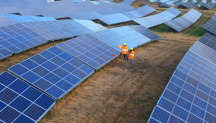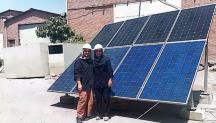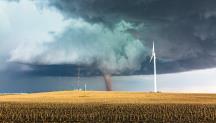

Renewables and Green Gas: The Only Viable Antidote to High Fossil Fuel Prices
Newsletter
Outdated perceptions of the costs of clean energy remain a major barrier to the energy transition. Despite the dramatic fall in prices across these technologies, the dialogue surrounding 'cheap' fossil fuels and 'expensive' renewable energy endures, and must be changed.
Over 2021, the cost of gas increased by a factor of ten to reach a record high, whilst the cost of landed thermal coal in Europe rose by a factor of three – to which the increasing costs of CO2 in the European Trading Scheme (ETS) can be added.
Daily Dutch “TTF” fossil gas prices, 2020–2022
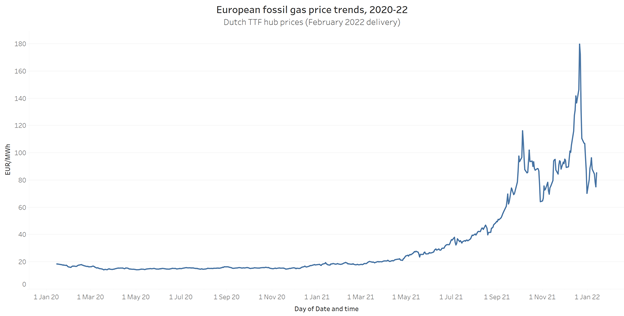
Note: Data is for February 2022 contracts. Source: ICE, 2022. TTF denotes Title Transfer Facility.
These eye-watering price increases have been passed on to electricity markets in Europe, hurting homes and businesses as the costs for heat and power rise – in some cases by as much as 40% – triggering government intervention in several countries.
The current high gas and coal prices in the EU have not been caused by renewables. Rather, they are the result of tighter natural gas supplies to Europe, under-utilised gas storage, soaring global liquefied natural gas (LNG) prices as the EU is outbid in its efforts to secure LNG supplies, and a variety of other policy inadequacies.
Monthly (gross) injections into EU natural gas storage by year, 2016–2021
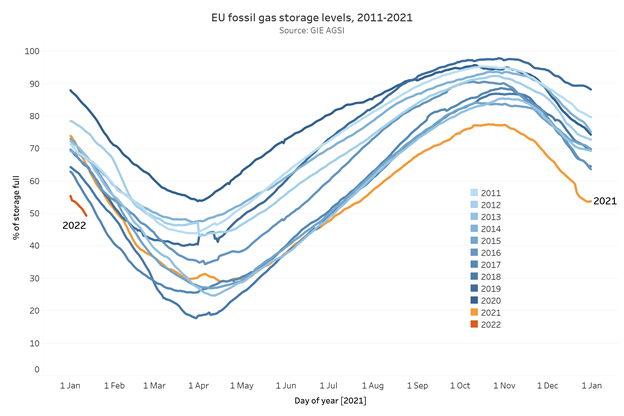
Source: GIE AGSI, 2021.
We are not powerless in facing this vicious gas price cycle – although there is no short-term remedy to lower prices, short of another extended period of warm weather – we can avoid a repeat of this situation in the future, as renewables and energy efficiency offer effective solutions to reducing our exposure to gas prices.
The lessons from the gas crisis in Europe are clear: we need to rapidly increase renewable energy production; promote true accounting and awareness of the costs of fossil fuel price volatility and the environmental impacts of its use; reduce gas demand through the electrification of heating and building renovations; and design robust policies to support the use of green gas.
However, all of these goals are undermined by the repeated, systematic failure to adequately factor-in fossil fuel price volatility, which is holding back investment in viable renewable solutions.
Greater investment in renewable power generation earlier in the last decade would have saved European and Asian countries billions. Similarly, in industry and buildings, lacklustre progress in deploying renewables and scaling up energy efficiency programmes is now costing businesses and individuals dearly.
Contrary to prevailing perceptions, renewable electricity is already competitive with fossil fuels, and, given today’s high gas prices, significant volumes of biomethane and green hydrogen will also now be economical. Indeed, we vastly underestimate the value of green gas. Unlike prices for traditional gas, renewable energy costs are generally known upfront and can be locked in for the entire project lifetime, which brings us to the question; with falling renewable energy prices and extreme gas price volatility, can blue hydrogen stay competitive?
Today’s fossil-based energy crisis, which is almost certain to be repeated in the future, should fundamentally change our perception of green gases as “expensive” alternatives. Furthermore, the prices attributed to fossil fuels do not reflect costly externalities, such as the health, environmental and climate impacts, all of which should be taken into account in the economics of the energy transition.
Governments must take account of the true cost of energy and consider the opportunities that renewable energy offers us to future-proof our economies and insulate them from the volatility and insidious long-term costs of fossil fuels.

Expert Insight by:
Dolf Gielen
Director, IRENA Innovation and Technology Center, IRENA

Expert Insight by:
Michael Taylor
Senior Analyst, Renewable Energy Cost Status and Outlook, IRENA

Expert Insight by:
Barbara Jinks
Programme Officer - Green Gas Delivery and Use, IRENA
© IRENA 2025
Unless otherwise stated, material in this article may be freely used, shared, copied, reproduced, printed and/or stored, provided that appropriate acknowledgement is given of the author(s) as the source and IRENA as copyright holder.
The findings, interpretations and conclusions expressed herein are those of the author(s) and do not necessarily reflect the opinions of IRENA or all its Members. IRENA does not assume responsibility for the content of this work or guarantee the accuracy of the data included herein. Neither IRENA nor any of its officials, agents, data or other third-party content providers provide a warranty of any kind, either expressed or implied, and they accept no responsibility or liability for any consequence of use of the content or material herein. The mention of specific companies, projects or products does not imply that they are endorsed or recommended, either by IRENA or the author(s). The designations employed and the presentation of material herein do not imply the expression of any opinion on the part of IRENA or the author(s) concerning the legal status of any region, country, territory, city or area or of its authorities, or concerning the delimitation of frontiers or boundaries.

